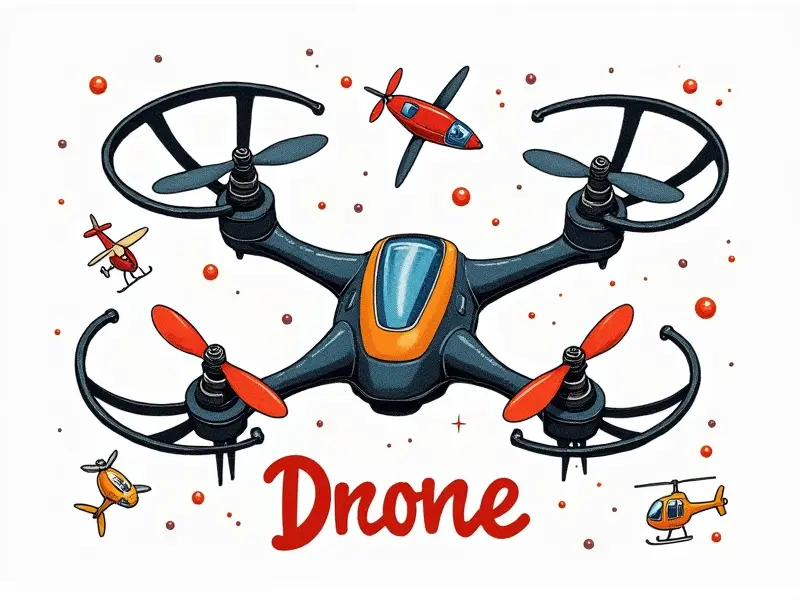What is an RC airplane?

Beginner's Guide to RC Planes
Welcome to the exciting world of remote control (RC) airplanes! This guide will introduce you to the basics, types, and components of RC planes. Whether you're a hobbyist or just curious about these fascinating machines, this article is for you.
Understanding RC Aircraft Basics
An RC airplane is a model aircraft that can be controlled remotely from the ground using radio signals. These models range in size from tiny indoor flyers to large-scale replicas of full-size planes. They offer enthusiasts an engaging and rewarding hobby, combining elements of engineering, aerodynamics, and creativity.
How Do RC Planes Work?
The operation of an RC plane involves several key components:
- Radio Transmitter: The transmitter sends signals to the receiver in the airplane. It typically has sticks for controlling pitch, roll, and yaw.
- Receiver: This device receives radio signals from the transmitter and converts them into electrical impulses that control servos or electronic speed controllers (ESC).
- Servos: Servo motors move the control surfaces of the plane, such as ailerons, elevators, and rudder.
- Battery Pack: Provides power to the receiver and servos. Some planes also use batteries for electric propulsion.
Top Types of RC Airplanes
There are several types of RC airplanes, each with unique characteristics:
- Freestyle/3D Planes: Designed for aerobatic maneuvers and stunts. They often have powerful motors and large control surfaces.
- Racing Planes: Built for speed and agility, these planes are popular in competitive racing events.
- Sport/Fun Flyers: Ideal for beginners due to their ease of use and forgiving nature. They offer a balance between performance and stability.
- Scale Models: Highly detailed replicas of full-size aircraft, these models are prized by hobbyists for their realism and craftsmanship.
RC Plane vs Full-Scale Plane
While RC planes share many similarities with full-scale airplanes, there are significant differences:
- Size: RC planes range from a few inches to several feet in length, whereas full-scale planes can be much larger.
- Materials: RC models typically use lightweight materials like foam and balsa wood for ease of construction and flight. Full-scale planes are made from more robust materials such as aluminum and composite structures.
- Purpose: RC planes serve recreational purposes, while full-scale planes have practical applications in transportation, military operations, and research.
Essential RC Plane Components
To get started with RC flying, you'll need the following components:
- Radio Transmitter & Receiver: Essential for controlling your plane from the ground.
- Servos and Control Surfaces: These control the movement of the wings, tail, and rudder.
- Battery Pack: Powers the electronics in your RC plane. Lithium polymer (LiPo) batteries are commonly used for their high energy density.
- Motor & Propeller: For electric-powered planes, a motor paired with an appropriate propeller is necessary to generate thrust.
Fun Facts About RC Planes
Here are some interesting facts about RC airplanes:
- The first RC airplane was flown in 1920 by Nikola Tesla, using a radio-controlled boat as inspiration.
- RC planes can reach speeds of over 400 mph (643 km/h) in competitive racing events.
- Some hobbyists build scale models so accurately that they are indistinguishable from real aircraft at a distance.
Getting Started with RC Flying
If you're new to the hobby, here’s how to get started:
- Choose Your Plane: Start with a simple sport/fun flyer or trainer plane designed for beginners.
- Learn Basic Aerodynamics: Understanding lift, thrust, drag, and weight will help you control your plane better.
- Practice Ground Control: Before taking to the skies, practice controlling your transmitter on the ground.
- Join a Club or Community: Engage with other hobbyists for tips, advice, and camaraderie. Many clubs offer training sessions for beginners.
An RC airplane is a model aircraft that can be controlled remotely using radio signals. These planes range from small indoor flyers to large-scale replicas of full-size airplanes. They are popular among hobbyists and enthusiasts who enjoy the challenge of building, flying, and maintaining these intricate machines.
RC Airplanes for Hobbyists
For hobbyists, RC airplanes offer a unique blend of creativity and technical skill. Building your own model from scratch can be incredibly rewarding, as you learn about aerodynamics, electronics, and craftsmanship. Flying an RC plane also provides endless opportunities to refine your skills and explore new techniques.
The Ins and Outs of RC Aircraft
Understanding the intricacies of RC aircraft involves learning about their design, construction, and operation. From selecting the right materials for building a model to mastering the art of flying, there is always something new to discover in this dynamic hobby.
Conclusion
RC airplanes are more than just toys; they represent an engaging blend of technology, craftsmanship, and aerodynamics. Whether you're a beginner or an experienced hobbyist, RC planes offer endless opportunities for learning and enjoyment. With the right equipment and knowledge, anyone can become proficient in this exciting field.

